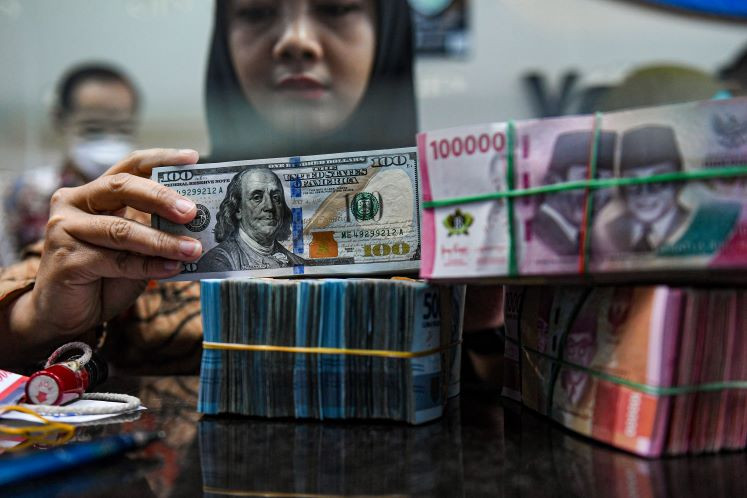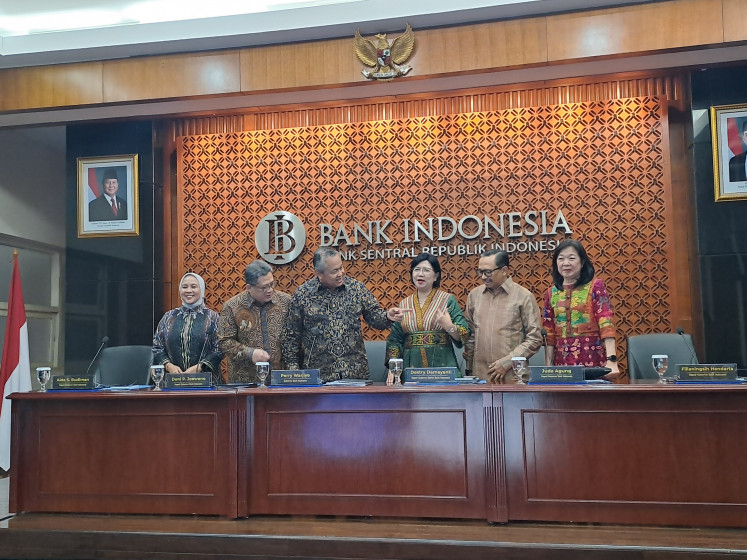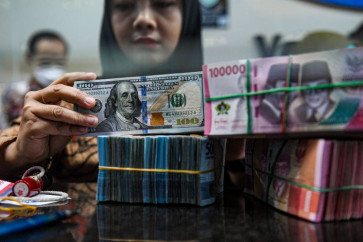Popular Reads
Top Results
Can't find what you're looking for?
View all search resultsPopular Reads
Top Results
Can't find what you're looking for?
View all search resultsCharting out the rupiah exchange rate movement
In the worst-case scenario, if the pressure against the rupiah continues to persist, the BI can stretch $12 billion of the forex reserves over the course of the year to maintain the rupiah at the level of 15,700.
Change text size
Gift Premium Articles
to Anyone
T
he recent fluctuations of the rupiah against the US dollar can be likened to an intricate opera, reminiscent of Richard Wagner's renowned that blend poetry, visual art, music and melancholic drama into a beautiful symphony.
Just as Wagner revolutionized opera with his genius for integrating diverse elements, Indonesia's economic strategy, specifically in its handling of the currency, requires a similarly harmonious approach.
The rupiah’s decline, influenced by both external and internal pressures, mirrors the complex movements of an orchestral piece. On the external front, uncertainties surrounding the United States Federal Reserve's interest rate policies and robust US data (i.e., US consumer spending and the manufacturing purchasing managers' index [PMI]) are contributing to a strengthening US dollar, further exerting pressure on the rupiah. Not to mention, the market still has concerns over Indonesia’s over-expansive fiscal policies in fiscal year 2025.
Seasonal trends also play a role, including increased demand for dollars leading up to the Idul Fitri celebrations, foreign profit-taking activities as indicated in broker data, the anticipation of significant US announcements during Indonesian holidays and the approaching period of dividend distributions.
Fortunately, the recent statement by Fed chair Jerome Powell, combined with easing US PMI service data, has helped alleviate tensions in the rupiah. We believe Bank Indonesia (BI) still has room to conduct triple interventions in the market without raising the Seven-Day Reverse Repo Rate in the second quarter. Our impulse response function (IRF) suggests that intervention through foreign exchange (forex) reserves will provide a prompt response to the rupiah’s appreciation against the US dollar.
The US$142 billion (should be 140) of forex reserves is still enough to provide that buffer while at the same time collecting all the export proceeds from some of the big exporters that are still not complying with regulations. Our estimates suggest that BI can collect approximately $8 billion to $10 billion of reserves from these exporters, which is more than enough to secure solid forex reserves.
A $1 billion intervention will be sufficient to temporarily adjust the rupiah to approximately 15,700 against the US dollar. If this is too expensive, $500 million will suffice to maintain the rupiah at around 15,800.



















